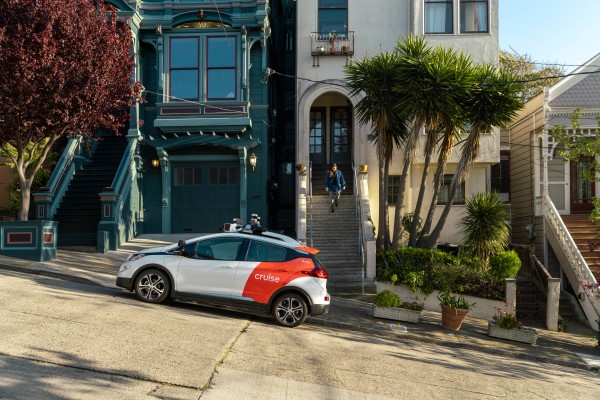[ad_1]
Cruise, the General Motors subsidiary dedicated to commercializing autonomous vehicles, saw a jump in expenses during the second quarter as the company launched its first commercial robotaxi service in San Francisco.
Cruise’s expenses hit around $550 million compared to $332 million during the same quarter of last year. Operating losses in the second quarter topped $605 million, up from $363 million last year. The increase in cost can be attributed to a headcount increase from revving up Cruise’s robotaxi service, as well as a change in the compensation expense, said CEO Kyle Vogt.
Cruise has a self-described “aggressive” growth strategy that Vogt described on Tuesday’s GM Q2 earnings call as “exponential.” In the past, the company has said the production and rapid scaling of its purpose-built Origin AVs will be a crucial part of that growth. But with General Motors experiencing a 40% drop in profits, which the automaker largely blames on semiconductor shortages and supply chain issues, it’s not clear how Cruise will be able sidestep those same problems and get “hundreds of thousands” of Origins into production over the next year, as former Cruise CEO Dan Ammann promised last October.
Availability of parts and semiconductors aside, Cruise is, understandably, burning through cash as it works to expand. Earlier this week, Cruise began mapping the streets of Dubai for a planned 2023 launch, and the company recently expanded its autonomous delivery pilot with Walmart in Arizona. While the company isn’t yet announcing new target cities, one can only assume an aggressive growth strategy means more vehicles in more cities next year.
At the moment, Cruise has $1.8 billion in cash, which seems like a lot right now. But let’s not forget Cruise’s operating expenses were $868 million in the first half of 2022 alone, and that money was spent mainly on launching a robotaxi service with retrofitted Chevrolet Bolts in one city.
GM and Cruise executives were coy about providing guidance for Cruise’s 2023 expenditures, instead deferring investors and analysts to the announcements that will be made at a Goldman Sachs conference in September.
“I would say we are going to make sure we fund Cruise and the spending is done in such a way that we can gain share and have a leadership position as well, and we have plans that we’re taking the cost out as the technology matures,” said GM CEO Mary Barra during Tuesday’s earnings call. “Obviously, the Origin will be an important part of that, as well.”
Without updated guidance, investors will assume that the losses may accelerate next year as San Francisco ramps up with more cars and new cities are launched. But Vogt said Cruise has done the work to “de-risk the technical approach” and apply what has worked well in San Francisco to other similar ride-share markets.
“When you’ve got the opportunity to go after a $1 trillion market where you can have a highly differentiated technology and product, you don’t casually weigh into that,” said Vogt. “You attack it aggressively. And given our strong cash position in Cruise, we’re able to do this and aggressively presenting the market, I think, is a competitive advantage. And given our position right now, I think the results speak for themselves. But what you’re seeing right now is the early commercialization.”
Cruise has its initial net revenue coming in at $25 million for the quarter, so it’s possible the expanding losses can be ameliorated somewhat by increased revenue in the future.
“With what they’re demonstrating in 30% of the San Francisco area having the ability to charge for rides and with the plans that we have for this year and next, we’re going to make sure that we have all of the resources available to scale that business quickly because we do think there’s a first-mover advantage,” said Barra. “And so one of the strengths and the work that Cruise and GM do together is make sure that we have a plan and we have the funding available to support a rapid growth strategy.”
[ad_2]
Source


